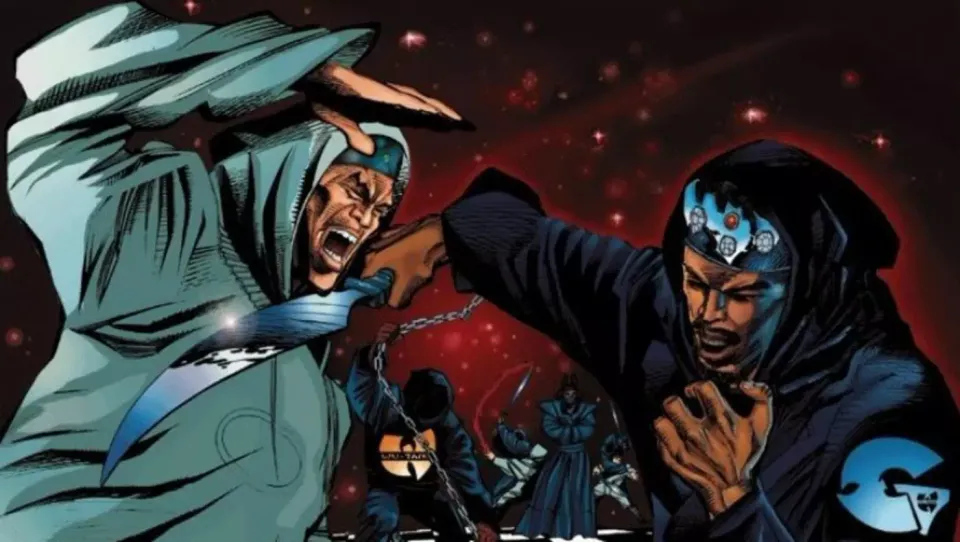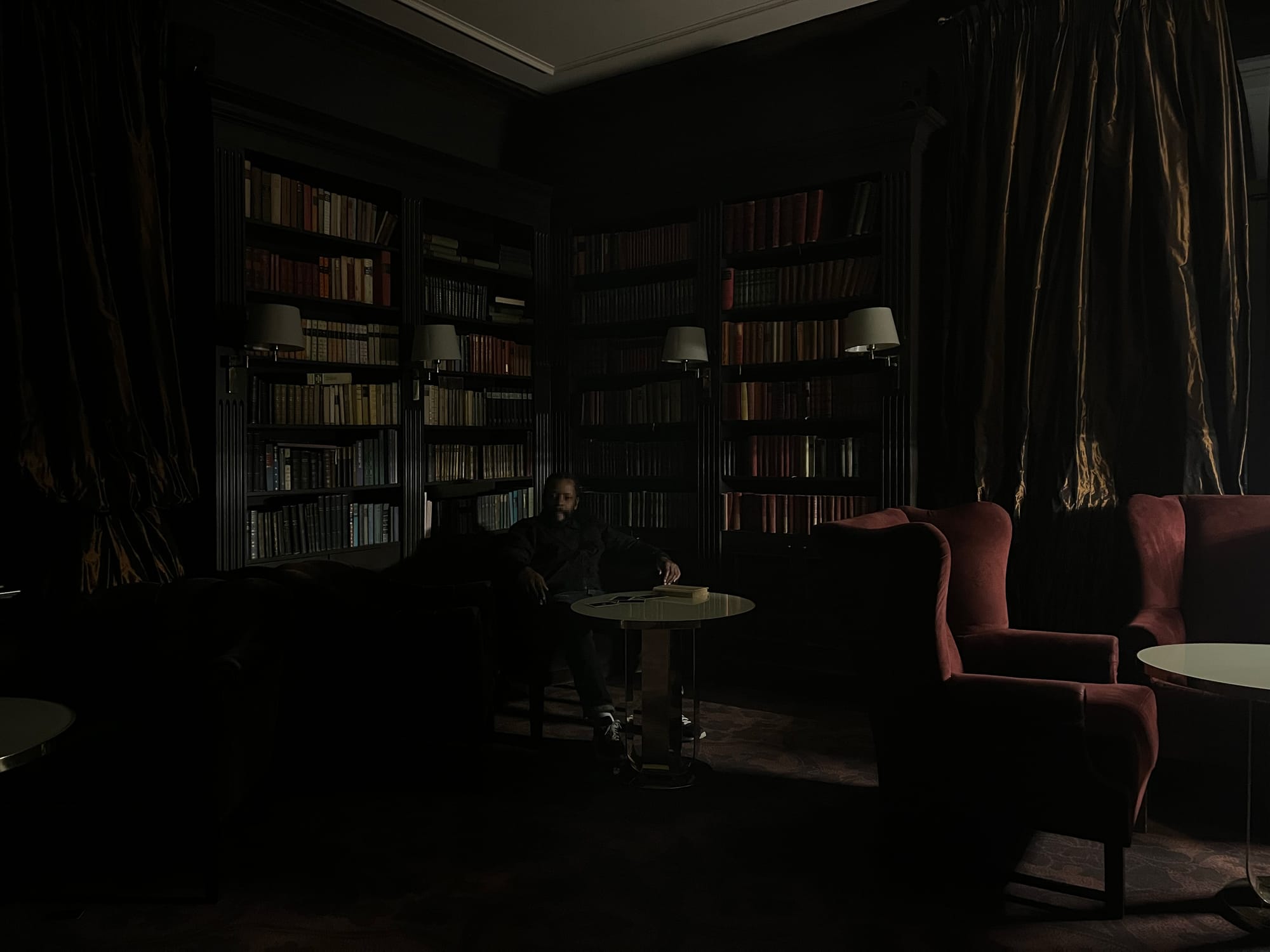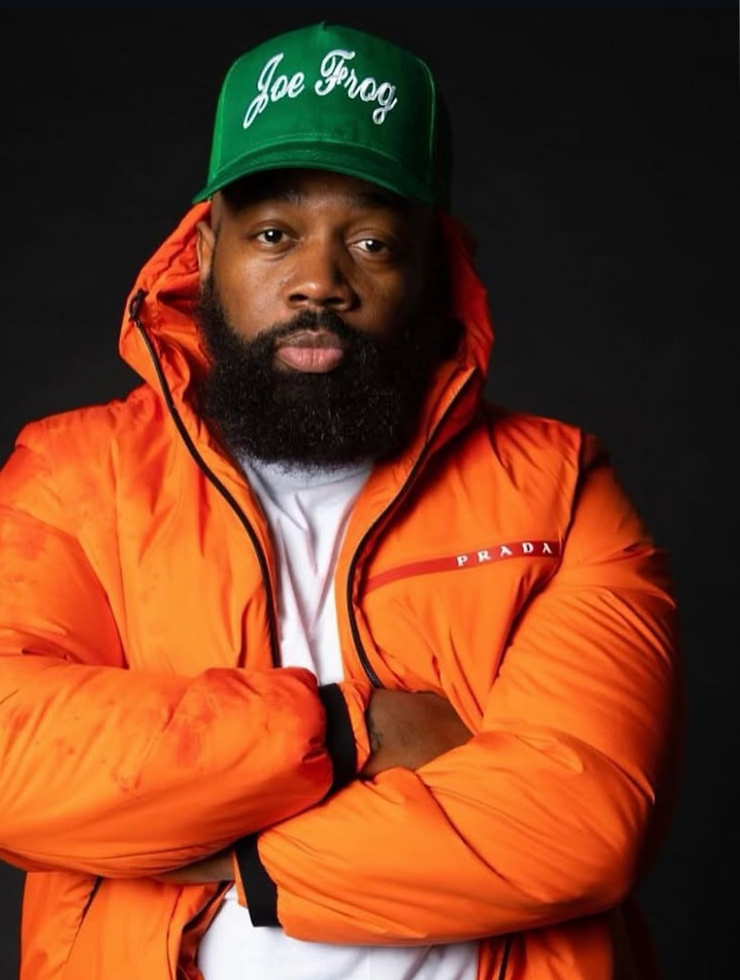Wristwatch The Throne
On rap's relationship with luxury timepieces, a cross-cultural nexus point where Mach-Hommy meets Navy Blue


As a kid growing up in New York City, I was unimpressed by Rolexes, having seen so many counterfeits laid out on rickety curbside tabletops and even less stable wrists.
I won't play like I'm some horological expert, nor would I dare suggest that any of the four inexpensive watches currently in my possession qualify me as any kind of collector. But given my lengthy history as a hip-hop critic and listener, coupled with the fact that my father spent my youngest years working for a small and long-gone Queens manufacturer, I've developed a natural inclination towards timepieces.
My dad, who moved onto a different industry altogether with his transferrable skills, liked to point the fakes out to me, effectively demonstrating the pointlessness of surface-level luxury. But knowing what he knew about the business, he'd still occasionally come home from a department store or meeting with an old jeweler friend and show me the latest deal he'd gotten. It further cemented the idea in my mind that spending a couple hundred bucks on a watch that looked nice enough and worked fine was enough. Plus, every time he'd gifted me one in my rambunctious adolescence, I managed to scratch, scuff, or otherwise abuse it in record time. Watches soon became an afterthought, tucked away and ignored in the back of a drawer.
In the 2010s, however, I started paying attention again, thanks in no small part to rap lyrics. Iced out, busted down pieces were very much in vogue with trap stars, gleaming and visible in music videos but perhaps made even more prominent by mentions within the actual songs. Patek Philippe, a Swiss brand founded in the 1800s, grew ubiquitous within the culture via on-record boasts by the likes of Future and Migos, but also those from outside of ATL's musical realm including Pusha T. The first time I'd even heard of Breitling was probably on the hook of now-departed Rich Homie Quan's hit 2013 single "Type Of Way," though it could easily have been via Rocko's opening "U.O.E.N.O" verse from that same year:
A.P. and that Piguet, wear the Breitling when I’m bored
Got a Masterpiece and a 41-millimeter, and you ain’t even know it
I would credit Rocko for introducing me to Audemars Piguet there, but that distinction more likely goes to A$AP Rocky, who shouted the brand out on his Santigold-infused LONG.LIVE.A$AP cut "Hell."
Even as hip-hop media contracts into an opportunistic cabal of gossip columnists and craven podcasters, fashion and luxury-oriented publications continue to dutifully watch rappers' wrists. Last year, Robb Report got Rick Ross to share details about some of his pieces, including an emerald-encrusted Royal Oak. A genuine collector across brands, billionaire Jay-Z's well-documented Patek passion covers everything from the white gold Grandmaster Chime he donned for Diddy's 50th birthday party back in 2019 to the bejeweled Grand Complication he sported at 2024's Champions League Final. The specialist magazine Hodinkee offers a wealth of reported stories and commentaries about rappers wearing watches as part of its overall coverage of the field, including ones like how Jay-Z's acquired a highly coveted vintage Patek from the 1980s, a career-spanning survey of Pharrell's impressive personal collection, and advice for Lil Baby after his Nautilus was revealed to be fraudulent.
As disappointing as music publications have gotten with their overwhelmingly facile coverage of hip-hop culture, I find myself ironically driven to these inherently, dare-I-say traditionally superficial outlets to gain interesting insights about these artists. (Wherever possible, I've even tried mirroring some of these angles in my writing here at CABBAGES, chatting about loafers with Goya Gumbani earlier this year as an entry point to his latest album.) So naturally I was intrigued to catch the latest episode of the REVOLT-housed Wrist Check podcast, for which guest Mach-Hommy arrived wearing a Piaget Altiplano Ultimate. He casually showed off the ultra-thin 41 mm alligator-strapped model with its white gold case and transparent automatic mechanism, sharing a mystique-building anecdote about acquiring it that might otherwise never have been made public:
"I bought the first one that they sold, in Beverly Hills, when I got it at Piaget. And they invited me to some dinner. In sterling fashion, I accepted the invitation but then sent someone else in my stead. And they was like, 'did you know I was sitting next to the CEO? You should have came.'"
Of course, my curiosity was piqued enough to go looking for this particular Altiplano Ultimate online, finding it (or some version of it) for sale on the company's website at a tidy $40,700 retail price.
When it comes to collecting, Mach's aggressive consumer pricing strategy and corresponding cult status sets him apart, as does a youth where his elders' watch tastes helped him begin to shape his own. For most indie rappers, save for those whose content skews towards bricks and weight, owning a five-figure timepiece is a fantasy at best. Still, he's hardly the only artist in this niche category with deep knowledge of and ongoing interest in the world of watches.
Sage Elsesser, the pro skater known to a certain class of hip-hop fan as Navy Blue, is part of a vintage-oriented, appointment-only crew of collector-sellers known collectively as Very Special, which was profiled last month in Highsnobiety:
In his own collecting journey, Sage Elsesser had a similar realization. “Once I got rid of this idea that a watch has to be an ‘investment piece,’ things started opening up,” he says. “You get some money and you want a gold [Rolex] President, the symbol of success in this country. But you do your research, and you realize there are watches at a more accessible price that are almost cooler in their niche way.”
Watches manifest on Navy Blue records in a different manner than on those classic trap singles or even Mach-Hommy's output. On last year's Memoirs In Armour, his first project since getting dropped from Def Jam, he used his familiarity as an opening salvo for the otherwise existentially revealing track, "Time Slips":
Time be slipping on me, like
Now my wrist could fit a Roley twice
Day and the date, Presi' bracelets
Diamonds on the face, Lil Uzi Vert
Elsewhere on the album, he weaves horological references into his unabashedly autobiographical verses, as on the Nicholas Craven-produced "Red Roses":
Flip the script, ain't sorry for who I'm becoming
Me and mine winning, cheek to cheek grinning
Steel Royal Oak with the moon phase in it
On his just-released album, The Sword & The Soaring, Elsesser remains in the same confessional mode. The watch bars are absent, though that makes sense in a serious song cycle that delves deep into past grief and trauma to clarify his current state of mind, as well as a future push towards faith-based enlightenment. Though his outside interests may not have served his aims as a writer in this latest case, for someone so cognizant of rap's poetic potential as him, the metaphoric connections between the passage of time and the items that tell time remain vast and worthy of further artistic exploration.


Three new tracks to snack on...
junclassic, "1NCE B4"
BLUEHILLBILL, "Bricks"
Armand Hammer & The Alchemist, "Laaraji"





